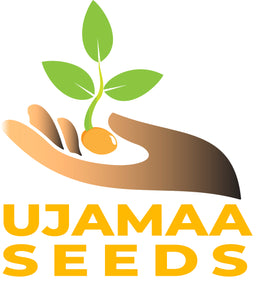Provider Bean (Bush)
Phaseolus vulgaris
Germination: 95% Apr 2025 (Packed for 2025)
Select Available Sizes Above:
- Packet
- Quarter Pound
- Half Pound
- One Pound
Origins and History
Phaseolus vulgaris, commonly known as the common bean, originated in the Americas and is one of the world’s most important legume species. Archaeobotanical evidence shows that it was independently domesticated in two major centers: Mesoamerica (modern Mexico and Central America) and the Andean region (modern Peru and surrounding areas). Genetic studies confirm that these two regions produced distinct gene pools—Mesoamerican and Andean—which gave rise to the enormous diversity of beans we know today, including kidney, pinto, black, navy, and cranberry beans.
Before European contact, Phaseolus vulgaris was already a key component of indigenous diets across the Americas, often grown alongside maize and squash in the “Three Sisters” intercropping system. After the Columbian Exchange (post-1492), the common bean spread rapidly to Europe, Africa, and Asia, where it adapted to diverse climates and became a major source of plant protein worldwide. European traders and African farmers further diversified its use and selection, leading to the development of numerous landraces suited to local cuisines and climates.
The Provider Bean (Phaseolus vulgaris) is a widely admired bush snap bean developed in the 1960s by Dr. Hoffman at Clemson University in South Carolina. Bred for reliability, early maturity, and adaptability, it quickly became a favorite among both commercial growers and home gardeners. Its name reflects its generous yields and dependable performance, especially in cooler soils where other beans may struggle. Although not as ancient as some heirlooms, its decades-long popularity has cemented its place in the lineage of reliable open-pollinated varieties.
Appearance and Characteristics
Provider is a compact bush-type bean that typically grows 18–24 inches tall and does not require trellising. It produces straight, round, medium-green pods that are about 5–6 inches long. The beans are stringless when young and have a crisp texture. One of its standout traits is its disease resistance—Provider shows strong tolerance to common bean mosaic virus and powdery mildew, making it a hardy choice in diverse conditions.
Culinary Uses
Provider Beans are prized for their tender, flavorful pods. They can be eaten fresh, steamed, sautéed, or used in stir-fries and casseroles. Their uniform shape makes them ideal for freezing and canning, retaining both texture and taste after preservation. While primarily grown for their green snap pods, if allowed to mature, the seeds inside can also be used as shelled beans.
Growing Tips
Provider is known for its early maturity—ready in as little as 50–55 days—which makes it a great choice for both spring and fall plantings. Sow seeds directly in the garden after the last frost date, spacing them 2–3 inches apart in rows 18–24 inches apart. It germinates well in cooler soil compared to many beans, which allows for earlier sowing. Like other beans, it prefers full sun and well-drained soil. Avoid over-fertilizing with nitrogen, which can encourage foliage over pod production.
Harvesting Guidance
Harvest Provider Beans when pods are firm, crisp, and about the thickness of a pencil—typically before the seeds inside begin to bulge. Frequent picking encourages continued production. Pods left too long on the plant can become tough and stringy. For best flavor and texture, harvest in the morning after the dew has dried, and refrigerate soon after picking to retain freshness. If saving seeds, allow some pods to fully mature and dry on the plant before collecting.





